JOMC Newsletter
Japan Tourism Topics
1. Join local residents in "Tosa no Okyaku" celebrations in Kochi prefecture
Tosa is an old name for Kochi prefecture and Okyaku, which generally means visitor in Japanese, has a special meaning in Kochi. Okyaku also refers to gatherings to celebrate important community events, a culture deeply rooted in the region. During the annual Tosa no Okyaku celebrations, in March, festivities are held at restaurants, shopping arcades, major parks, and even inside trains. The friendly locals are happy to share their culture and traditions and extend their hospitality to visitors. While joining in the festivities, you can try sawachi, a traditional platter of seafood, sashimi, stewed vegetables, deep-fried food, and desserts dating back to the Edo period, and locally brewed sake.
Tosa no Okyaku
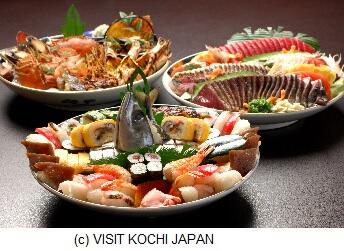
2. Help protect the environment on a unique trekking and packrafting tour
Come experience a side of Japan that few people ever see on this forest trekking and rafting eco-tour in the Oki Islands, located off the coast of Japan's Shimane prefecture. Operating between March and October, this unique tour allows you to see pristine nature in both inland forest areas and in the ocean. You will trek through untamed nature and paddle across the open sea on your way to see the Saburō-iwa Rocks. You'll help protect the local environment by retrieving garbage from the ocean along the shore while learning about the local area. The tour concludes with coffee and snacks by the sea.
Oki Islands
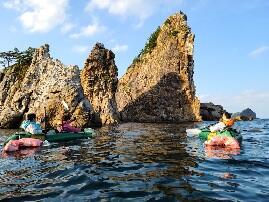
3. Observe the arrival of spring among the blooming plum trees at the Kenrokuen Garden
Located in Kanazawa, Ishikawa prefecture, Kenrokuen Garden is commonly referred to as "one of the three great gardens of Japan" and is known for its seasonal beauty. During this time of the year, the garden boasts an array of nearly twenty different plum tree species with roughly two hundred trees in bloom simultaneously, heralding the arrival of spring.
Kenrokuen Garden
4. Taste sake at the newly renovated sake brewery Auberge in Saga prefecture
The renovation of brewery Auberge "Onyado Fukuchiyo" will be completed this March in Saga prefecture and will feature a restaurant and Japanese-style inn. The inn is a 230-year-old historic merchant building renovated to provide the finest modern comforts, located in a quiet sake brewing town, away from the hustle and bustle of the city. The inn's Meister is the creator of the local Nabeshima sake and cuisine, which he expertly matches the food and sake for patrons. Guests who stay in the inn can participate in a tour of the brewery, which is normally not open to the public.
Onyado Fukuchiyo

5. See the Grand Gate of the Itsukushima Shrine in Hiroshima in its full glory
The large vermilion-colored Grand Gate, featured in many famous pictures of Japan, has been fully renovated. More than 140 years after its construction in 1875, the Gate has undergone renovations and is now restored to its original appearance. The Gate is best viewed up close when the tide recedes, and the ground around it can be accessed on foot. Be sure to also visit the Itsukushima Shrine, which enshrines the deity said to ensure the well-being of the Imperial Family, guard the nation, and protect seafarers.
Itsukushima Shrine
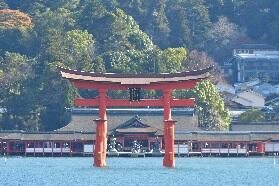
6. Enjoy seasonal, trendy Japanese cuisine in a new restaurant and hot spring complex
The Fujitsuka area on the eastern coast of Sendai City was severely damaged by the Great East Japan Earthquake. Built as part of the reconstruction effort, Aquaignis Sendai is a large food, agriculture and hot spring complex where local people can come together once again. Its restaurants utilize a wide variety of local Tohoku and Miyagi foodstuffs prepared by some of Japan's leading chefs, and a bustling food market provides visitors with plenty to explore and sample. In addition, there is a hot spring that gushes from one kilometer underground!
AQUAIGNIS SENDAI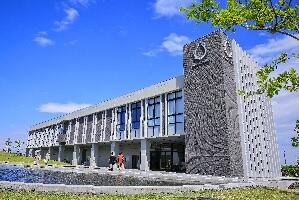
7. The animate Ikebukuro Flagship Store will be holding its grand opening on March 16!
The animate Ikebukuro Flagship Store is celebrating its 40th anniversary by undergoing renovations and will officially reopen on March 16. The anime shop chain "animate" is a key part of the anime community and serves as a hub for anime lovers all around the world. The animate will continue to evolve as a place where anime culture can be fully experienced through all five senses. There are new facilities that visitors can enjoy, such as a theater and an event hall. They look forward to welcoming you to one of the biggest anime shops in the world!
animate Ikebukuro Flagship Store

8. Enjoy the plum blossoms at the Inazawa Plum Festival
Experience for yourself the beauty of 104 varieties of plum trees in bloom. Entry to this Inazawa Plum Festival, which takes place just outside the city of Nagoya, is free; visitors can enjoy a range of fun attractions such as haiku and photo contests, walking tours, and more.
Inazawa Plum Festival
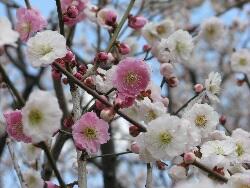
9. Experience the Hina Nagashi Festival at the Awashima Shrine in Wakayama Prefecture
South of Osaka, in the city of Wakayama, the Awashima Shrine is hosting its traditional Hina Nagashi festival, involving the ritual floating of girls' dolls down to the sea, on March 3. The hina (dolls) are placed on wooden boats with wishes written on them for the healthy growth of the girls and released into the ocean, thereby washing away the bad luck.
Hina Nagashi Festival
10. Nara's Todaiji Temple to hold its Shuni-e ceremony in early March
Todaiji Temple in Nara, famous for its giant Buddha statue, will be celebrating its Shuni-e ceremony for two weeks starting March 1st to herald the coming of spring. This ceremony is formally a rite of repentance during which one can repent one's misdeeds, attain a pure mind and body, and good luck. The ceremony features a succession of large flames that are swung around at night with cascading embers flying through the air. Rituals involving such vivid displays of fire are rare and are a sight to behold.
Todaiji Shuni-e Ceremony
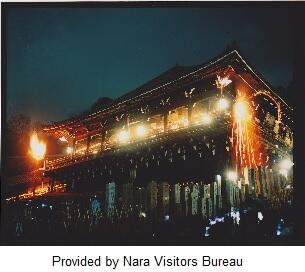
Notes:
• Items 1-6 are based on information from JNTO Partners
• The above details are correct as of the time of publication, and are subject to change.
If you'd like to download photos and videos of Japan's tourist attractions, please visit the Japan Online Media Center (JOMC).
For media inquiries, including requests to use photographs, please contact the JNTO Press office at media_inquiry@jnto.go.jp
